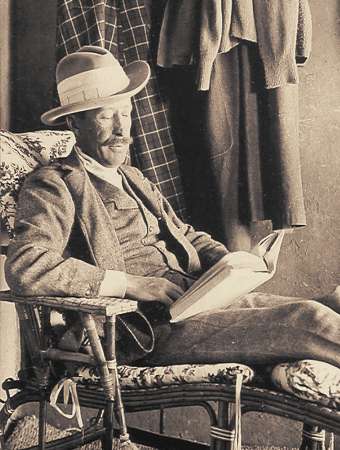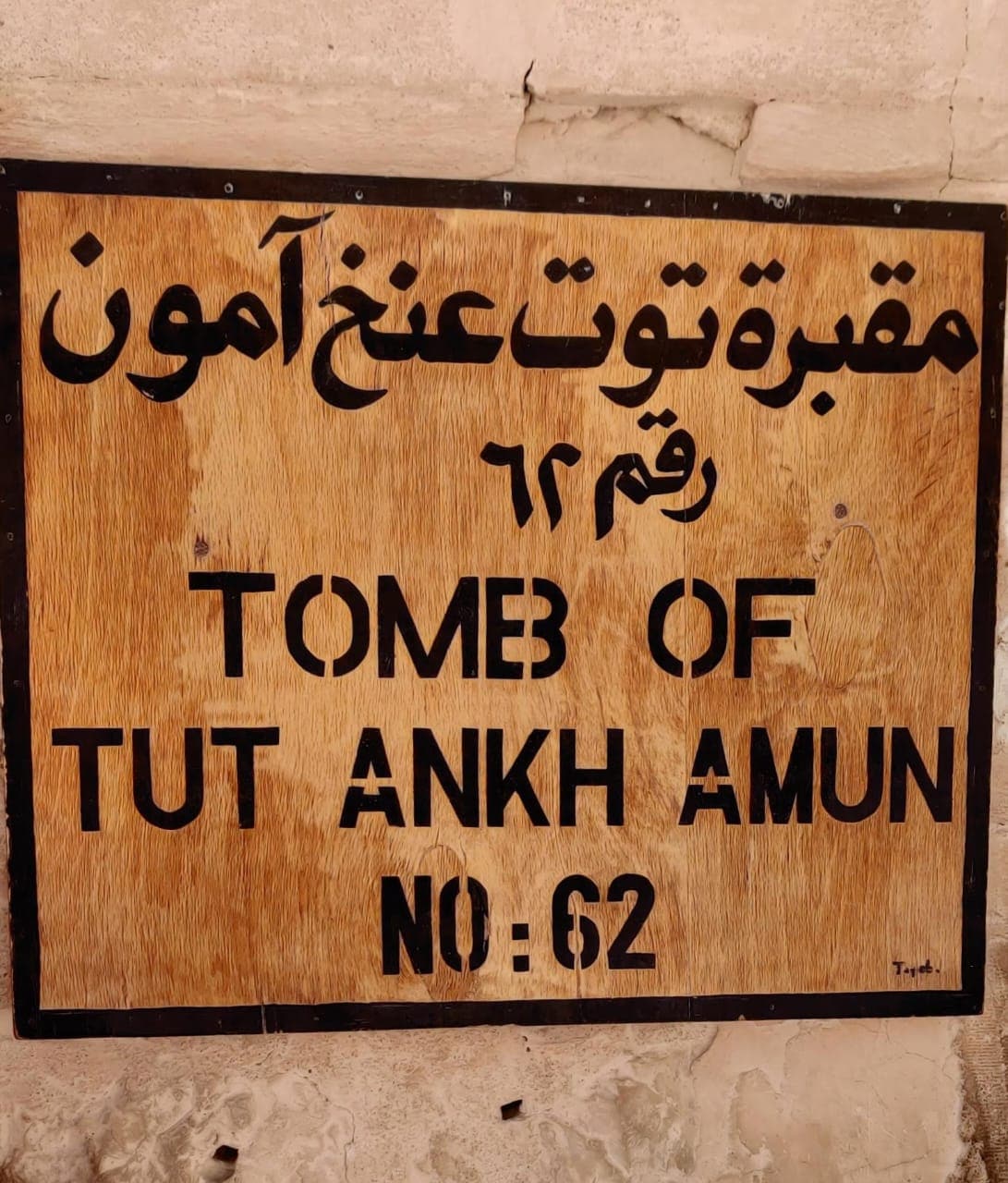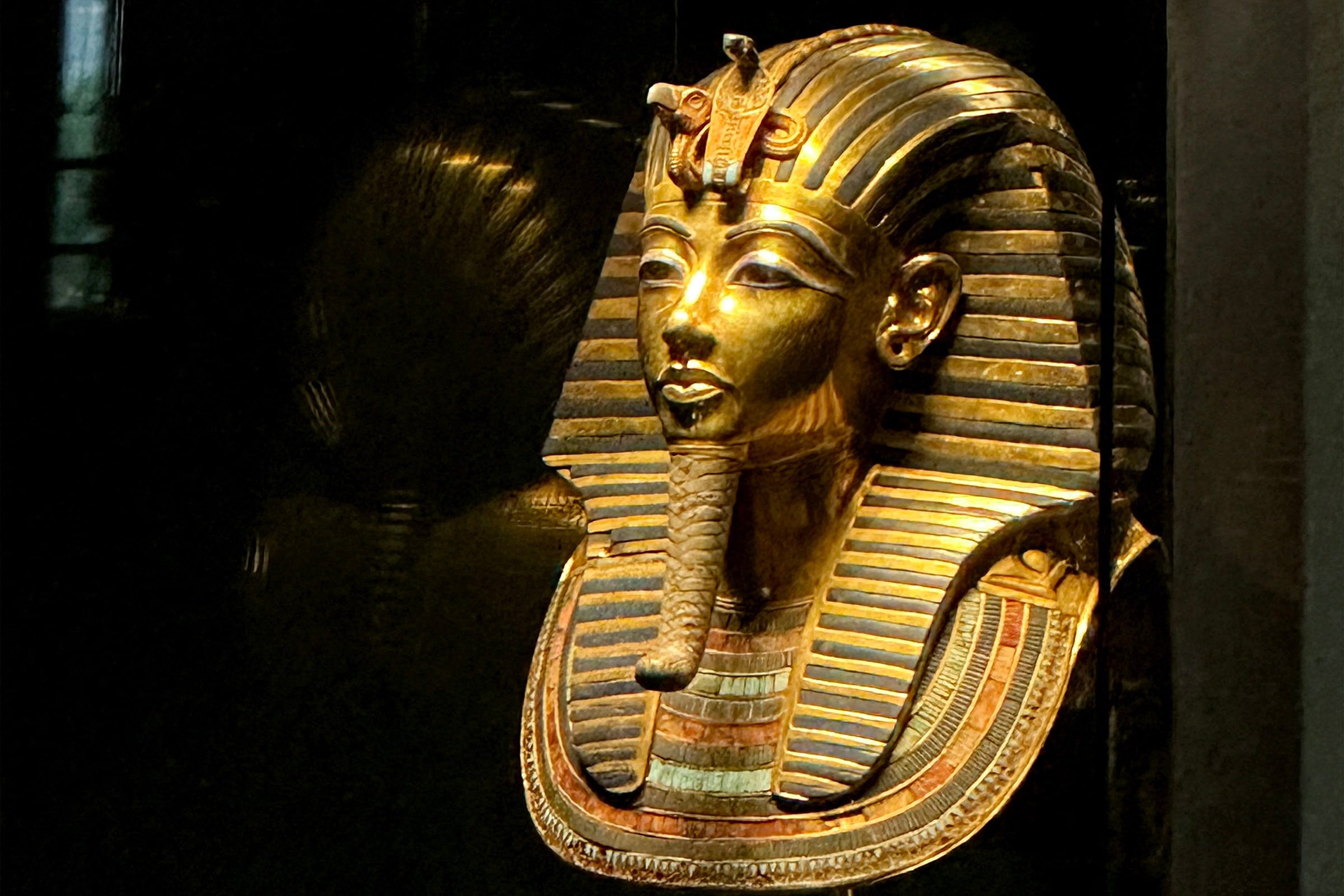
Two decades and a billion dollars later, the Grand Egyptian Museum is finally open in Cairo. As the museum brings together more than 5,000 treasures from King Tutankhamun's tomb under one roof for the first time ever, fascination with the 'curse of the Pharaoh' has once again taken the spotlight.
Few stories intertwine history, archaeology, and myth as dramatically as the excavation of Tutankhamun's tomb; and the tragic fate of the man who sponsored its discovery, Lord Carnarvon.
The Englishman Who Got Into Tutankhamun's Tomb
Born George Herbert, the 5th Earl of Carnarvon, the British aristocrat was an enthusiastic supporter of Egyptology in the early 20th century. A debilitating car accident in 1903 left him looking for warmer climates to alleviate his health problems. It was around this time that Carnarvon looked at Egypt. He pored over Egypt and poured his considerable fortune into sponsoring archaeological excavations in the country.

Lord Carnarvon. Photo: Wikipedia
Two decades later, Carnarvon struck gold. Literally, quite. His most legendary investment, the partnership with archaeologist Howard Carter, in 1922, finally led to the unsealing of King Tutankhamun's tomb in Egypt's Valley of the Kings. The discovery was one of the greatest archaeological finds of all time: the boy king's tomb yielded a breathtaking array of gold, jewellery, furniture, chariots, and, at last, Tutankhamun's famed golden death mask.
News of the find had the world fascinated, as archaeologist after archaeologist from Europe and America packed their bags and moved to Egypt to look for treasures. A new wave of Egyptomania had gripped the West.
A Death And 'The Curse Of The Pharaoh'
Just months after the tomb's opening, tragedy struck.
In March 1923, a mosquito bit Carnarvon on the cheek. He didn't think much of it.
A few days later, while shaving, Carnarvon accidentally nicked the wound. It led to infection. Blood poisoning followed.
On April 5, 1923, Carnarvon died in Cairo. He was 56. It had barely been a few months since Tutankhamun's burial chamber was formally opened.

The tomb of King Tutankhamun is in Valley of the Kings in Egypt. Photo: Author
The bizarre circumstances of his death, reportedly accompanied by a citywide blackout in Cairo, and the nearly simultaneous death of Carnarvon's beloved Jack Russell terrier, Susie, back at Highclere Castle in England, quickly drew Victorian-era spiritualists, journalists, and the general public into a frenzy. Many believed that Carnarvon had fallen victim to the 'curse of the Pharaohs', a supposed supernatural punishment for disturbing the tomb.
What News Reports And Popular Fiction Said
On April 5, 1923, the New York Times carried an Associated Press report on the death of Carnarvon, headlined, "CARNARVON IS DEAD OF AN INSECT'S BITE AT PHARAOH'S TOMB; Blood Poisoning and Ensuing Pneumonia Conquer Tut-ankh-Amen Discoverer in Egypt."
"While the press of the world was still devoting much space to the contributions to the world's art and history which Lord Carnarvon and his fellow- explorers had uncovered came the news that he had been suddenly stricken and was seriously ill in Cairo from the bite of an insect. By the public at large the misfortune which the Earl had met was regarded as a lamentable incident of what might happen in a tropical clime such as that of Egypt," the New York Times report said.

The New York Times, April 5, 1923
"But to the credulous students of Egyptian mysticism the news did not come as a surprise. Even before Lord Carnarvon was stricken with blood poisoning... there had been talk of curses laid by the ancient Egyptians, with mystic incantations, on any who dared disturb the sleep of Pharaoh. After he was stricken the old legends spread, and hundreds were to be found not before superstitious, who were ready to believe that the old Egyptian curse had fallen on the rich and famous Englishman," continued the report.
"There were some who even questioned whether it was an insect that had dealt him the poisonous stroke. It was suggested that he might have touched some poisoned object in the tomb itself, set thirty centuries ago to revenge the dead king on any who might disturb his rest. Marle Corelli, the writer, recently declared that she called the attention of Lord Carnarvon to the beliefs of Egyptian mysticism and also expressed herself as not surprised at an accident occurring to those daring explorers who rifle the tombs of dead monarchs," it said.
Popular fiction amplified the idea. Rumours swirled about a mysterious warning inscribed at the entrance of King Tutankhamun's tomb. Sherlock Holmes creator Sir Arthur Conan Doyle even speculated that "elementals" or ancient spirits could have taken Carnarvon's life. Spiritualists claimed his dog's abrupt death, howling and collapsing at precisely the hour of his own, proved the family was doomed by the pharaoh's wrath.
Such was the timelessness of the mystery of Lord Carnarvon's death that author-filmmaker Satyajit Ray, writing detective fiction decades later in Calcutta, found a way to incorporate it into his Feluda mystery, Anubis.
The More Scientific Reason Behind The Death
However, most historians agree there is a more realistic explanation. Carnarvon's health was already weak. He had, after all, moved to Egypt after a car crash. Infections in the early 20th century were often fatal. This was the age before antibiotics. Carnarvon's infection, thus, might not have been due to a some-thousand-year curse but because of a cocktail of issues plaguing 1920s Egypt. Tropical climates, an insect bite, blood poisoning, and lack of knowledge of medicine and healthcare in the developing world all did their bit in pushing Carnarvon to his death.
Of the 26 people present at the opening of the tomb, only six died within a decade.
But then, who would want to spoil a perfect story of awe, history, mystery, unexplained circumstances and fate.

King Tutankhamun's gold funerary mask. Photo: AFP
Today, Tutankhamun's treasures are on display at the Grand Egyptian Museum in Cairo. The gold mask sits there too, hiding its curses and mysteries behind that enigmatic smile.
Track Latest News Live on NDTV.com and get news updates from India and around the world

